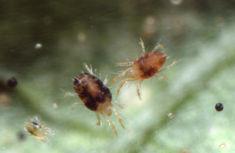
Higher populations of spider mite in tunnel-grown strawberries demand a strategic approach to control as harvest commences, according to a leading adviser.
While the recent warm and dry conditions have proved favourable breeding conditions for spider mite, Dennis Wilson of Soft Fruit Solutions believes a very warm autumn 2006 was responsible for high overwintering of the pest.
“September was a particularly good month that saw last year’s breeding season extended and a higher carryover to 2007,”Wilson explains. “That has meant we have come out of winter with pests present earlier than usual and in higher numbers, so we have had to work harder to get on top of it.
“Warm, dry weather and low humidity - just the conditions we have had - will also increase the rate of reproduction. Spider mite could go from egg to egg in a matter of only two weeks, rather than a more usual three to four weeks,” he adds.
With harvest now underway and two weeks ahead of schedule, Wilson notes that solutions with a short harvest interval are particularly valuable. He recommends the Gyro brand of bifenthrin that can be applied at a robust rate and that has a zero day harvest interval. It retains the EC (emulsifiable concentrate) formulation and is particularly potent against spider mite. “It delivers quick knockdown of established populations and is active against a range of other pests,” he says.
Dennis adds that treatments should be alternated. The new SOLA for Sequel (fenpyroximate), when applied for tarsonemid mite control, gives useful and persistent control of spider mite. Other treatments with specific off-label approved for use in strawberries include clofentezine for ovicidal activity and abamectin for other pest stages.
With potentially severe implications of an infestation, good control of spider mite is vital to productivity. Left uncontrolled, plant vigour is reduced and the plant’s ability to grow can be severely affected by the pests literally sucking out the nutrients from the leaves.